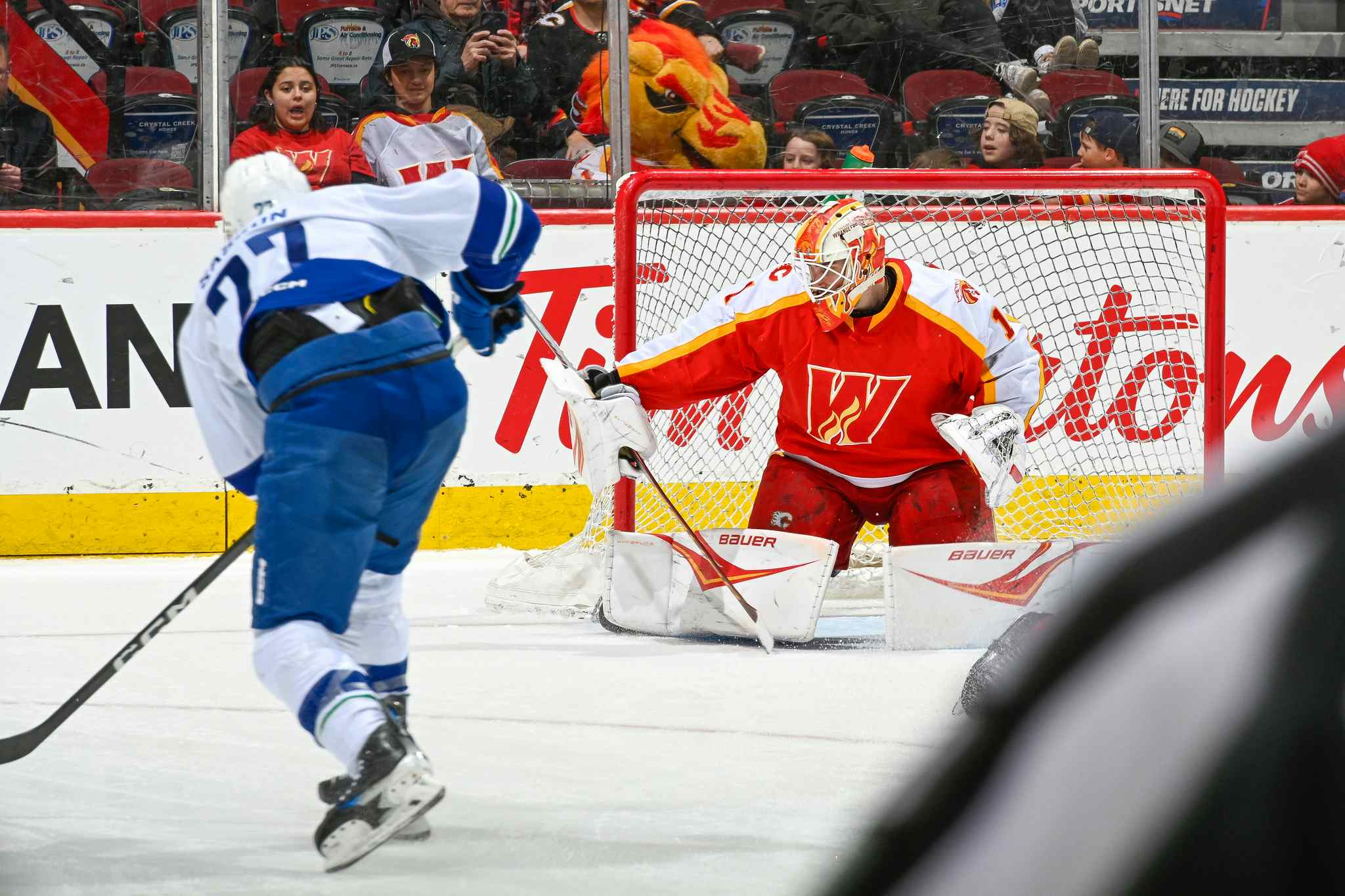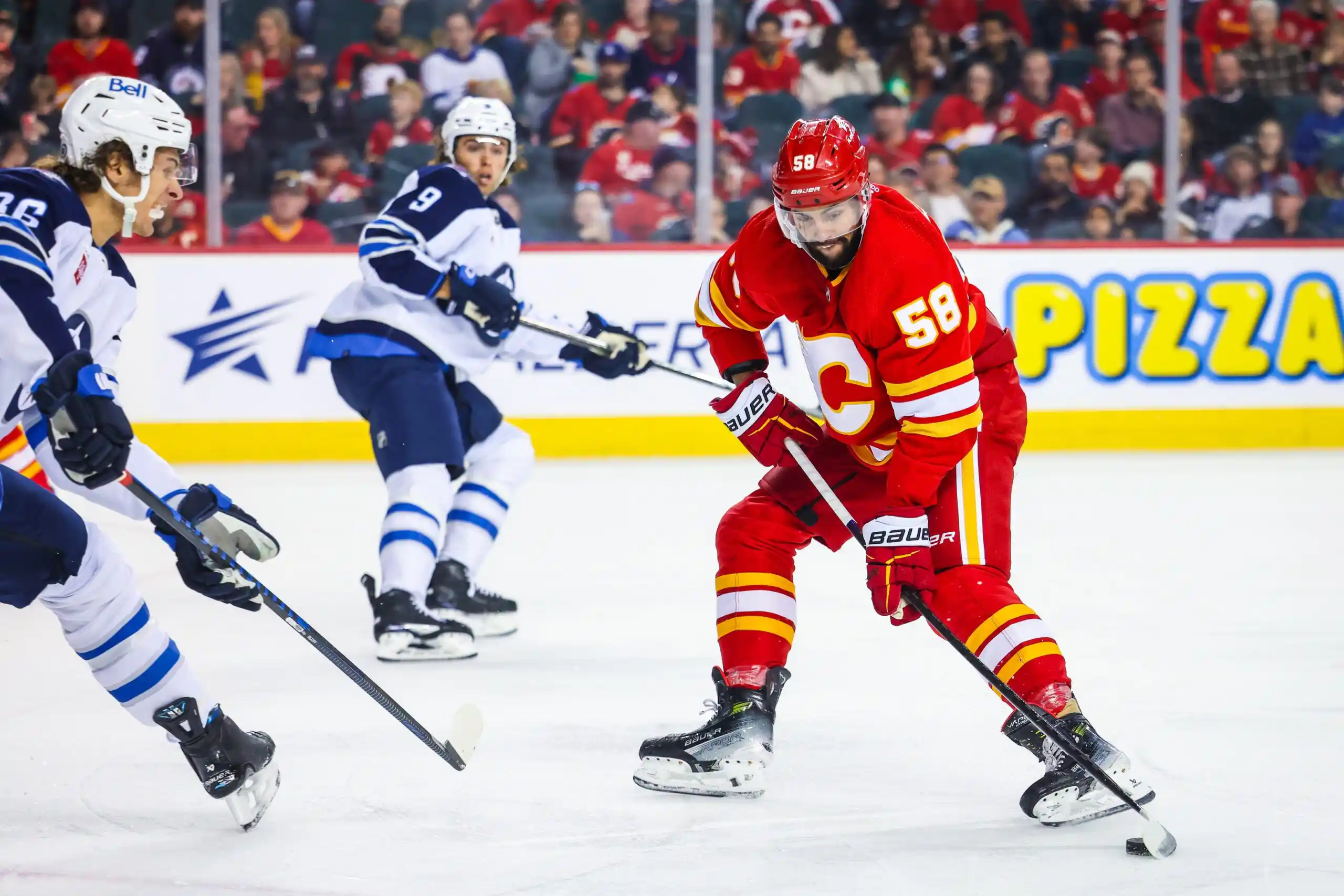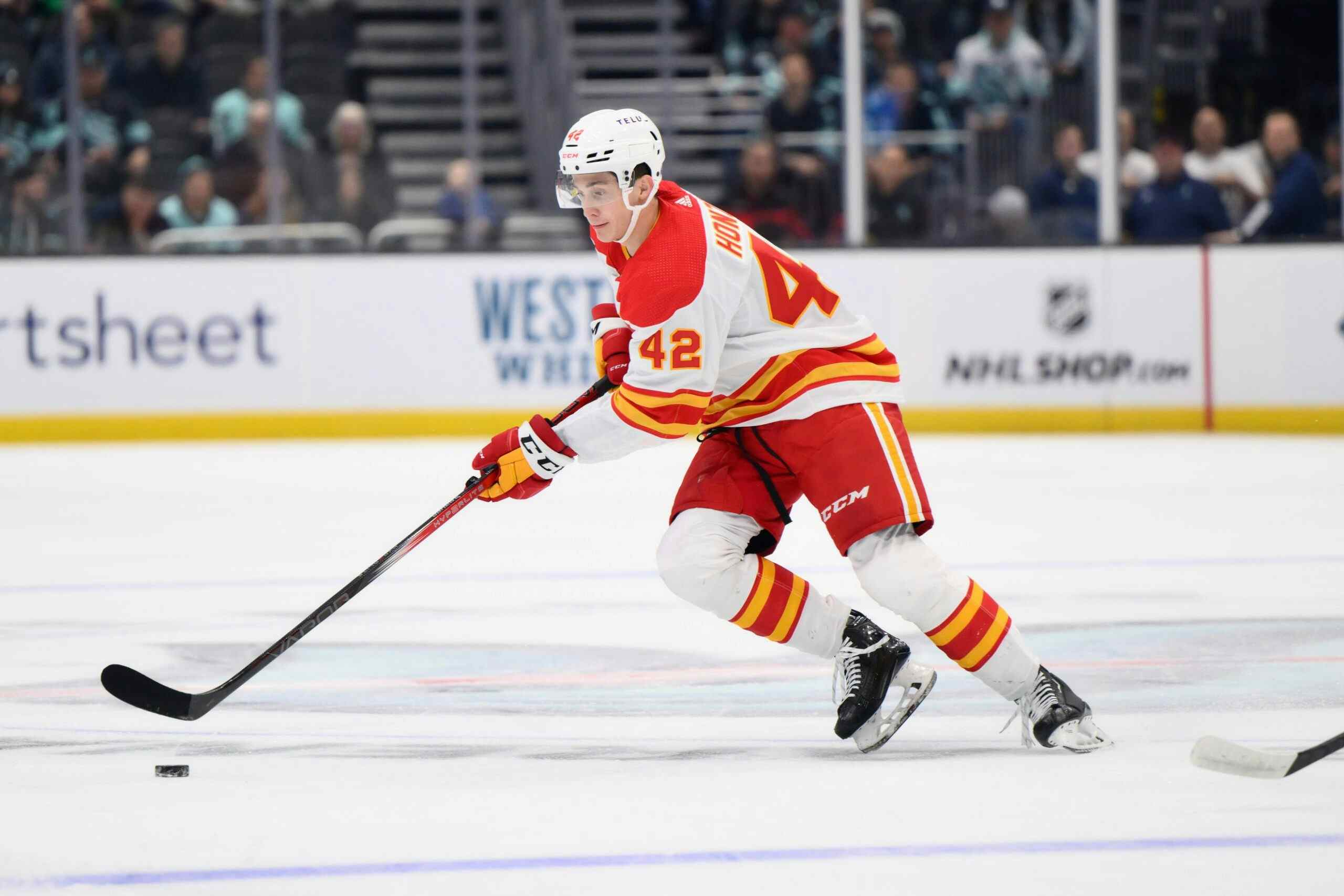Jets 4, Flames 3 (OT): Flames lose 11th consecutive season opener

By Mike Gould
3 years agoThat went just about as expected.
The Calgary Flames registered yet another season-opening loss on Thursday, blowing a 3-1 lead to the Winnipeg Jets en route to a 4-3 overtime defeat.
The setback extended the Flames’ losing streak in openers to 11 seasons, spanning over a quarter of the team’s history.
As was the case for much of the 2019-20 season, the Flames lost because many of their most expensive players failed to meet expectations. Johnny Gaudreau and Sean Monahan generated next to nothing at even strength. Milan Lucic had one of his worst games as a Flame. Chris Tanev made some impressive defensive efforts but the Flames got caved in when he and his partner, Noah Hanifin, patrolled the blue line.
It wasn’t all bad. The Flames got out to a hot start in the first period, out-shooting the Jets by a comfortable margin and generating far more expected goals. Matthew Tkachuk, Elias Lindholm, and Dillon Dube, the Flames’ newly-anointed first line, looked sharp and factored into two goals in the opening frame.
Let’s take a look at some of the key players from the Flames’ debut effort of 2020-21.
Juuso Valimaki and Nikita Nesterov
Thursday’s game was a long time coming for these two.
An ankle injury limited Juuso Valimaki to just 24 regular-season games, plus two more in the playoffs, in the 2018-19 season. A torn ACL held him out of the entire following year. Finally, Valimaki made his return to the Flames’ defence corps on Thursday, playing his first NHL shifts since Apr. 19, 2019.
Meanwhile, Nikita Nesterov also ended a lengthy absence from the NHL on Thursday. The 5’11” Russian rearguard split three seasons between the Tampa Bay Lightning and Montreal Canadiens before returning home in advance of the 2017-18 season, signing with the Kontinental Hockey League’s CSKA Moscow. Nesterov played with CSKA for another three seasons before agreeing to a one-year deal with the Flames last October.
Naturally, the Flames paired Valimaki and Nesterov together in training camp. They remained a set pairing throughout nearly every practice and continued playing as a unit in the season opener.
The Flames’ third pairing looked solid against the Jets. Both members ranked in the Flames’ top-five players in terms of expected goals-for—the Flames only had five players above 50% in that regard—and they meshed well stylistically. Both defenders played very simple and effective games, if not, at times, a little reserved.
Look for Valimaki, in particular, to get a raise on his 14:37 of ice time on Saturday against the Vancouver Canucks.
Deploying Milan Lucic and his line
The Flames’ big man was not effective at all on Thursday. It might have been Milan Lucic’s worst game as a Flame.
Let’s take a look at this play:
Let’s begin with the obvious: that’s a horrible turnover by Lucic. At that time, his options included:
- Playing the puck back into the corner for Rasmus Andersson to retrieve;
- Shielding the puck away from Mark Scheifele by turning his back to the Jets’ forward, allowing some time for a supporting player to help him maintain possession in a relatively low-danger area;
- Attempting to move the puck forwards along the boards toward his centre, Sam Bennett;
- Turning away from Scheifele and flipping the puck off the glass and out of the zone.
All of these choices would have been better than sending the puck dangerously careening towards the slot. Lucic attempted to make a tape-to-tape pass with Andersson instead of making a simpler play either forwards or backwards along the boards, and it ended up costing his team a goal that cut the lead to 3-2.
It was one bad play from Lucic in a game full of them. He looked slower and less agile than usual. His typically automatic passes kept missing their targets.
Players have bad games. That said, the Flames’ coaching staff exacerbated the poor performance of Lucic’s line by deploying it to begin both the first and second periods. The Scheifele goal, shown above, came on the first shift of the middle frame and completely shifted the momentum of the game. After a dominant first period, the Flames completely lost their mojo in the second and third periods.
Because the home team always has the last change, the Jets had the ability to counter the Flames’ lines with whichever forwards they so desired. To begin the first period, the Jets matched the Flames’ fourth line with a depth unit of their own; however, the Flames put themselves in a hole to begin the second by using the Lucic line again, countered by Scheifele and company.
In short—it’s usually best to avoid starting periods with depth lines (particularly those that are struggling). It’s always best to avoid starting periods with depth lines on the road, where the opposing team’s coaching staff will be able to respond with a rested top line. Scheifele’s tone-setting goal in the second period came off a bad Lucic turnover, but that line should not have been playing in the first place.
Jacob Markstrom’s debut
As expected, the Flames used their new $36 million man between the pipes in the season opener. It was the clear choice that became even more obvious when it was announced that backup David Rittich would be unavailable because of a family issue. (We hope everything is OK).
How did Markstrom look? All things considered, he was solid. According to Natural Stat Trick, he allowed four goals compared to 2.75 expected goals. That isn’t amazing, but it’s a little better than what Connor Hellebuyck managed (three goals versus 1.66 expected).
Were any of the goals really Markstrom’s fault? Not really. Two of them, including the overtime winner, came off the stick of Patrik Laine—good luck stopping those. One of those Laine goals came after a very impressive defensive play by former Flame Derek Forbort:
Failed to load video.
As discussed, the Scheifele goal was primarily caused by the Lucic turnover and poor deployment by the coaching staff. Sure, Markstrom kicked out a big rebound, but he had very little time to prepare for the initial shot. Subsequently, Kyle Connor’s game-tying goal came on a 5-on-3 advantage for the Jets, and just look how much time Connor had to set up for this one:
One area where Markstrom did not impress was behind his own net, particularly near the end of the net. For much of the game’s first 55 minutes, Markstrom wandered out of his crease only sparingly. Perhaps he gained a little too much confidence:
Bonus points to Lindholm for the Lucic-esque clearing attempt right up the middle. He just wanted to give his goalie an extra challenge.
Ultimately, it was a pretty typical season opener and the Flames should feel relieved that they escaped with a point. They started strong but quickly collapsed, somehow holding on to get the game to overtime after being drastically outplayed in both the second and third periods.
The three best and worst Flames
There were plenty of candidates tonight for the “worst” category; not nearly as many for the “best.”
The top three:
- Matthew Tkachuk. Scored a nice tip-in goal. Drove play effectively at 5v5 (59.1% Corsi, 54.6% xGF).
- Jacob Markstrom. Allowed no bad goals and covered for his own mistakes. Looked better than his .882 SV%.
- Juuso Valimaki. Fit in seamlessly after a long absence. 44.4% Corsi, 50.6% xGF.
The bottom three:
- Milan Lucic. Brutal giveaway on the goal that let the Jets get back into it. Looked very slow. 29.4% Corsi, 5.9% xGF (!!).
- Joakim Nordstrom. Did some decent work on the penalty kill, including a breakaway, but contributed little at 5v5. 25% Corsi, 11.8% xGF.
- Derek Ryan. Struggled on the wing; looked much better after being shifted back to centre in the third. 23.5% Corsi, 21.7% xGF.
All statistics in this article are from Natural Stat Trick.
Recent articles from Mike Gould





